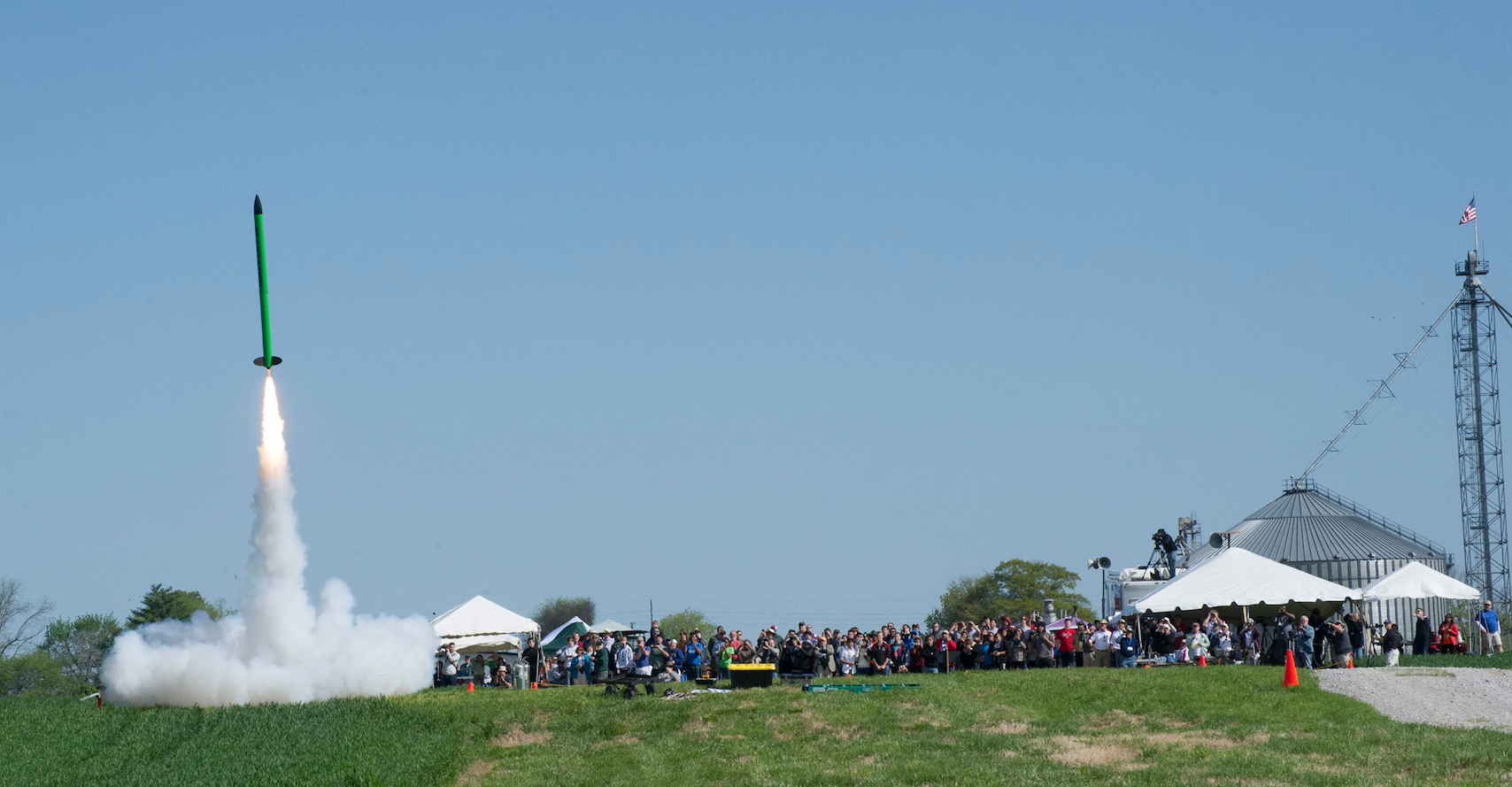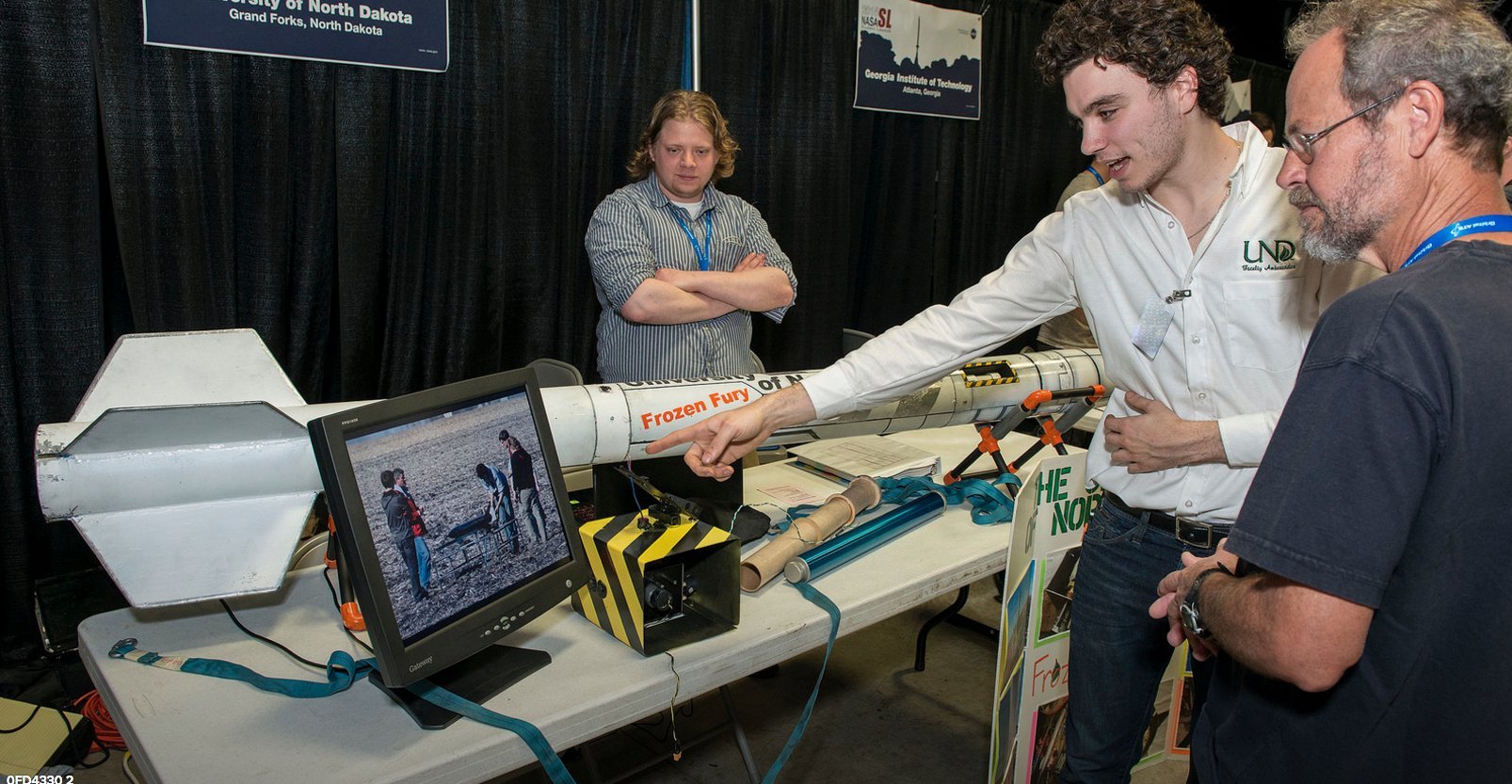Static stability margin, thrust-to-weight ratios and composite propellants — that may seem like a foreign language to some, but it’s everyday lingo for the dozens of young rocket scientists competing at this weekend’s Student Launch, on April 16, near NASA’s Marshall Space Flight Center in Huntsville, Alabama.
With another year of sky-high fun upon us, nearly 50 teams of high school, college and university students from across 22 states will compete for awards and cash prizes by launching rockets a mile high, and some by demonstrating additional robotic ground support systems.
Setting goals is a part of life, and so, too, are both of these challenges. Each team has spent the past eight months designing, fabricating and testing a single-stage rocket. They will attempt to launch to an altitude of one mile, or 5,280 feet, above ground level. Achieving that earns the maximum number of altitude points of 5,280. But going over or under that mark costs a penalty. Teams will lose two points for every foot above, and one point for every foot they fall short.
Back for a second consecutive year is the Mars Ascent Vehicle Challenge, running parallel with Student Launch. MAV requires teams to design an autonomous system capable of retrieving and storing a mock Martian sample into a rocket. Sponsored by the Centennial Challenges program — NASA’s citizen prize program — MAV highlights the need for autonomous technologies to assist in future sample return missions to Mars.
But, it’s not just about launching rockets or testing robotic systems. Yes, there are prestigious awards on the line, but so, too, is the promise of some cold, hard cash.
Orbital ATK of Promontory, Utah — longtime corporate sponsor of Student Launch – is offering an overall cash prize of $5,000 to the highest-ranking college/university team to meet the Student Launch objectives. The MAV challenge is offering a share of $50,000 for the top three teams completing their objectives.
Teams will also participate in “Rocket Fair,” an open-house event where they give a technical presentation about their rocket and any autonomous systems to hundreds of team members from NASA and Orbital ATK. This provides students an opportunity to gain valuable feedback from real rocket scientists and engineers.
After the smoke clears from dozens of high-powered rocket launches, teams will gather for a well-earned evening of celebration recognizing their hard work and dedication. The awards banquet — held at the U.S. Space & Rocket Center in Huntsville, and funded by Orbital ATK — recognizes the student teams with a bevy of awards, including Best Design, Altitude, Safety and more.
More than just a friendly competition, Student Launch and the MAV Challenge provide real-world experiences outside of the classroom in the STEM fields of science, technology, engineering and math. Throughout these authentic projects, students improve their interpersonal skills and learn to solve technical obstacles — each directly related to the success of NASA’s workforce.
All launches will take place at the Bragg Farms in Toney, Alabama, starting April 16 at 7:30 a.m. CDT and continuing until 4 p.m. or until the last rocket launches. The event will be broadcast on Marshall’s Ustream.
For more details about Student Launch, please visit:
https://www.nasa.gov/education/studentlaunch
For more information about the Centennial Challenges MAV Challenge, visit:






























